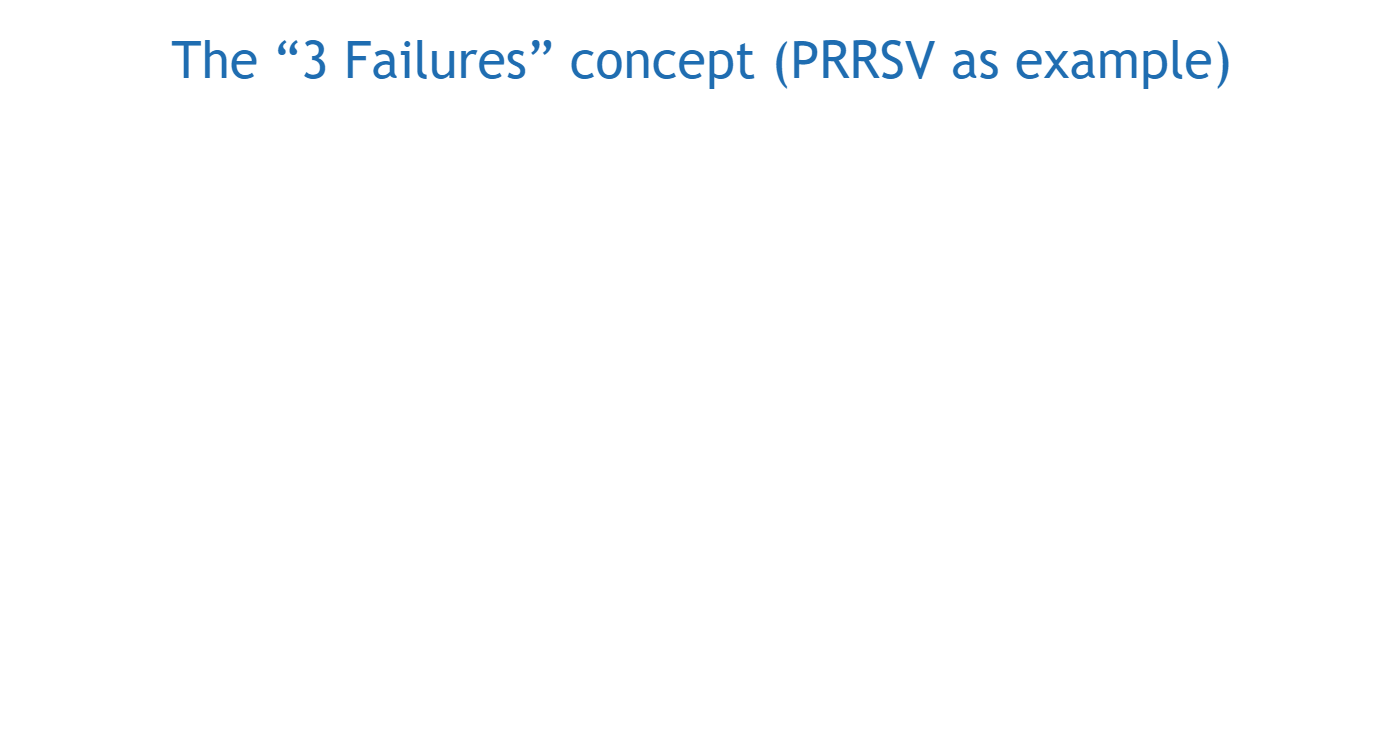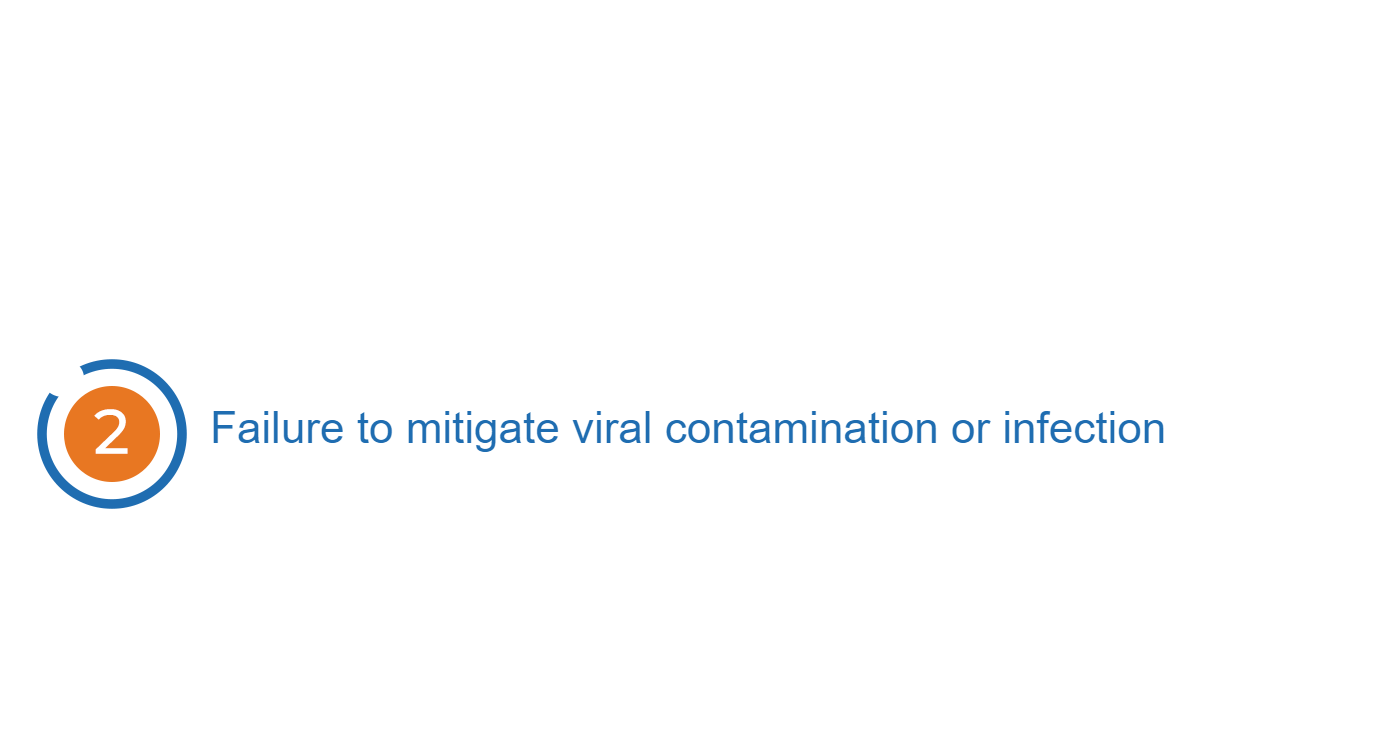Myth #1: Progress is being made
When I ask producers or swine veterinarians if progress is being made on biosecurity the response is typically yes. To support their answer, they cite the increased implementation of biosecurity practices, such as trailer washing, showers, and so on. But is that the best way to measure progress? Arguably, measuring the outcomes that biosecurity practices are intended to achieve is a better choice for measuring progress. In the USA, the incidence of outbreaks caused by PRRSV and PEDV in sow farms remains persistently high, and lateral introductions of PRRSV, coronaviruses, and other pathogens into groups of growing pigs continue to occur at a high frequency. In several countries, including the USA and Spain, wean-to-market mortality is high and increasing, signifying that the overall health of pigs is not improving. Finally, the spread of African swine fever virus worldwide does not suggest that progress on biosecurity is being made.
Why the lack of improvement in outcomes despite the implementation of more biosecurity practices? The pork industry has evolved rapidly in the last 30 years which has led to a substantial increase in biosecurity hazards. Geographically segregated production means that growing pigs are transported two or more times from birth to market, sometimes for long distances, facilitating the rapid spread of endemic disease. The reliance on hired labor and development of specialized boar studs, feed mills, and service centers, such as manure management and maintenance, has led to a significant increase in the frequency of entry events where pathogen-carrying agents, such as people, semen, feed, maintenance staff, vehicles, and equipment enter farms. As the size of companies increased, specialized departments formed making coordinated decision-making increasingly challenging. Decisions that affect animal health are increasingly being made by decision-makers with relatively little input from veterinarians. While progress in implementing biosecurity practices has been made, the lack of improvement in outcomes suggests that the changes that accompanied the rapid evolution of the pork industry in the last 30 years have increased biosecurity hazards faster.

Myth #2: We already know what to do
This is a common refrain I hear, especially from swine veterinarians. The implication is that we already know what good biosecurity control measures are; there is no shortage of published lists of good biosecurity practices, and if only we implemented them well we would make progress. I vehemently disagree. To be effective, biosecurity control measures must address the significant biosecurity hazards that increase the likelihood of transmitting a pathogen to a herd.
For a pathogen to be transmitted to a herd, three failures must occur (Figure 1). Three failures concept to identify biosecurity hazards) (Holtkamp et al. 2023). A biosecurity hazard is defined as a circumstance, action or inaction that increases the likelihood of one or more of the three failures and a biosecurity hazard analysis consists of a review of operational procedures to identify the hazards. The biosecurity hazards arise from the execution of operating procedures including those required to raise pigs and those done strictly to reduce biosecurity hazards, such as showering in and out of the farm. Identifying the biosecurity hazards requires a deep understanding of the production processes: how the operational procedures are done, who does them, when are they done, what are the circumstances, facilities and equipment with which they are done and where are they done. To say that “we know what to do” suggests that we have already identified the most significant biosecurity hazards. Based on my experience conducting outbreak investigations over the last decade, producers and veterinarians rarely have a holistic understanding of the details of the production process sufficient to adequately assess biosecurity hazards. If veterinarians and producers invest the time to identify and prioritize the biosecurity hazards they will find that real life in the pig business is stranger than fiction and that it is a mistake to presume that we already know what to do.
Myth #3: Outbreak investigations only have value if the cause of the outbreak is identified
Outbreak investigations are magnificent opportunities to identify and prioritize biosecurity hazards. You may have heard the saying “never let a good crisis go to waste.” Outbreaks are a crisis and they are an opportunity to learn, but learning is not guaranteed. If outbreak investigations are conducted well with the objective of identifying and prioritizing biosecurity hazards, the information learned will, in my experience, always provide a return on the investment in the investigation.
In 2021, the Swine Health Information Center (SHIC) funded the development of the Standardized Outbreak Investigation Program. A working group of fourteen swine veterinarians was formed to develop the terminology, approach, and instrument. The standardized outbreak investigation is conducted as an integrated biosecurity hazard analysis and epidemiological investigation. Hazard analysis applied to biosecurity on swine farms is a method of collecting and evaluating information on biosecurity hazards associated with introducing pathogens into a susceptible herd.
The approach and terminology developed for the standardized outbreak investigation borrowed heavily from the hazard analysis and critical control point (HACCP) methodology from the food industry. HACCP originated in the US National Aeronautics and Space Administration (NASA) in the 1960s. It was designed as a systematic method of quality assurance to identify food safety hazards and ensure that the food that accompanied astronauts on missions was not contaminated. NASA worked with process engineers in the food industry to develop a method that would ensure the creation of safe food products by analyzing and monitoring the production process rather than the production output. The emphasis on analyzing and monitoring the production process for food safety hazards is what makes HACCP amenable to analyzing biosecurity hazards in swine production.
Practical cases of how outbreak investigations have been used to identify and prioritize biosecurity hazards and implement biosecurity control measures to address the hazards will be discussed in a future article.




















